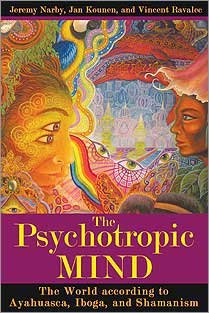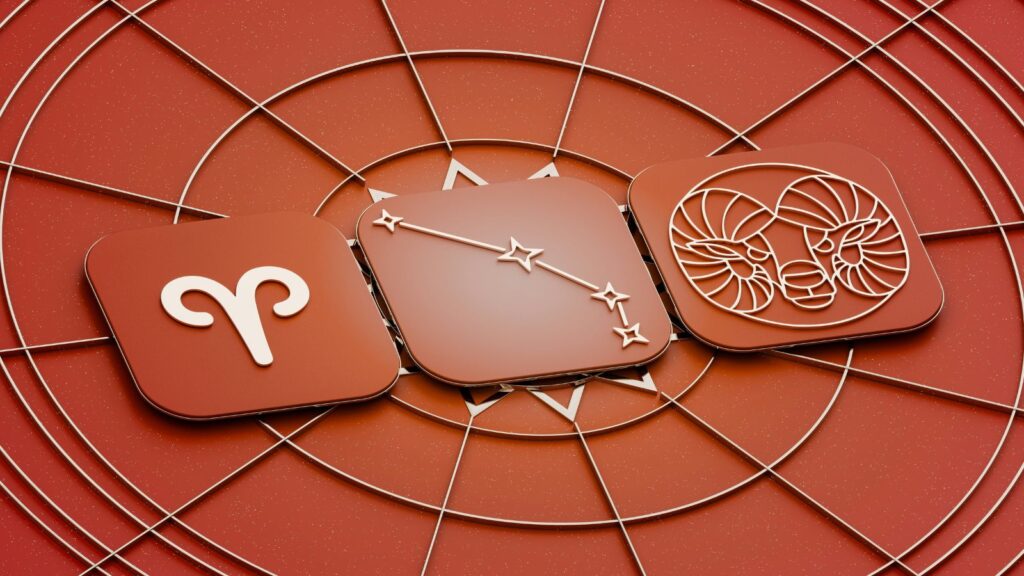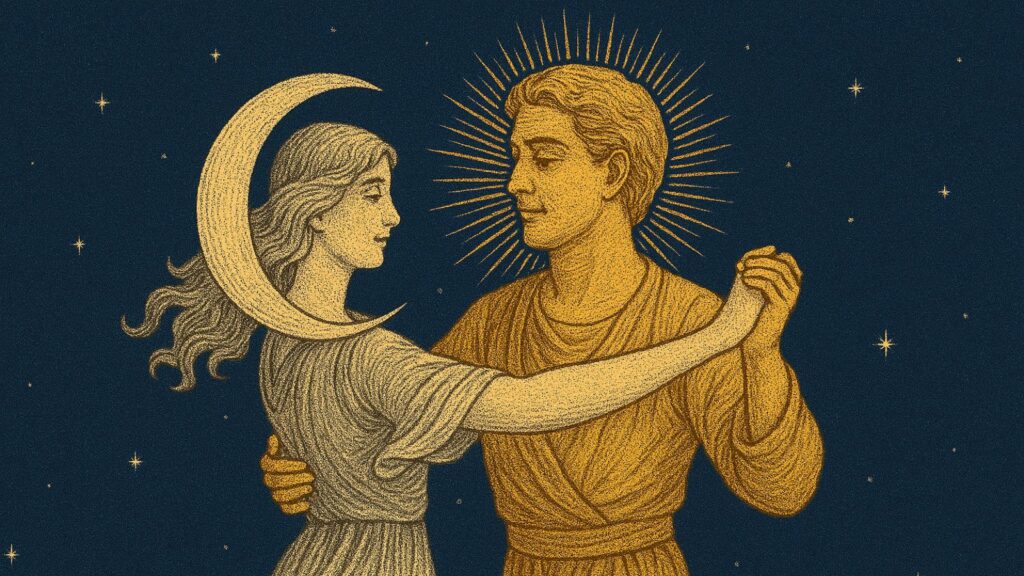The following conversation on ayahuasca is excerpted from The Psychotropic Mind: The World according to Ayahuasca, Iboga, and Shamanism by anthropologist Jeremy Narby, filmmaker Jan Kounen, and writer/filmmaker Vincent Ravalec, published by Inner Traditions Bear & Company.
Vincent: The ayahuasca experience can be separated from shamanism. We can take ayahuasca, for example, in an urban setting and have a very strong experience, one not necessarily connected to the ancestral experience of shamanism. The experience of shamanism is quite close to nature, which actually functions with interfaces of spirits; and someone who takes ayahuasca is not necessarily going to encounter, I don’t know, the parrot god who will come talk to him in his dreams or the green mouse who drops by to say hello. He is going to see something else. While someone is having the experience in a shamanic setting, one is going to go through its conceptual system. And you can have very strong shamanic experiences without taking ayahuasca. But it so happens that ayahuasca is a very formidable agent for altering consciousness.
Jan: What is ayahuasca, for you?
Vincent: Physically, it is a beverage that is quite unpleasant to drink. Now there are different blends, depending on the shamans who brew it. . . .
Jeremy: Would you agree that it is the Concorde of hallucinogens?
Vincent: Not at all. I am far from having tried everything, but there are people ayahuasca does not affect very strongly. I have seen people take it, it did not really resonate with them. The experience is different depending on the psychotropic “consciousness opener” that you take. This one has one specific feature; afterward, how to define it . . .
Jeremy: All right, I will give it a shot all the same, if we are going to discuss the experience it induces. When I experimented with it for the first time, when I was twenty-five, I already had had some experiences with hemp, psylocibin mushrooms, and LSD under my belt. I thought I knew a little about these kinds of things, and my ayahuasca experience stupefied me with the strength, power, and depth in its imagery. It was flat-out large fluorescent flows, three-dimensional images with a distinctly hallucinatory consistency even though LSD is reputed to be the strongest hallucinogen, and molecularly speaking that is true: all it takes is one hundred millionth of a gram and the parameters of consciousness are altered. LSD provides distortions, amplifies colors, changes music, but as a rule having real hallucinations with LSD is hard. The same thing with psilocybin, too, which is in the molecular family of DMT: it is interesting, you hear voices or get ideas in your head, but you rarely see things you have never seen before in your life. Scientists have confirmed, moreover, that DMT, one of the active molecules in the ayahuasca brew, is a spectacularly visual hallucinogen.
Vincent: It’s true it is very spectacular.
Jeremy: The advantage of ayahuasca, for the images, over just DMT is that ayahuasca lasts several hours. And what’s more, something that is unsettling with regard to other hallucinogens — and I am including alcohol — is that you remain lucid inside, an observer. The anthropologist taking notes can be inside a maelstrom of visual hallucinations. It is as if it was a film at the movies, a horror film or science-fiction movie, you’re saying: “Wow, what a film!”
Vincent: Finally . . . the effect is sometimes so strong . . . this has happened to me, I think to you, too . . . that you have difficulty moving.
Jeremy: You cannot even take notes anymore.
Jan: People often speak of DMT, but the vine itself, the ayahuasca, beyond the fact that it can last several hours, does something quite particular: it causes drunkenness.
It is a very specific kind of drunkenness, one that gives the individual a new perception of his body, of his movements in an organic level. It allows him to enter worlds that are more like visions than hallucinations, because they have a kind of consistency. It is not a distortion of reality, it is an entire other reality that is superimposed over reality, which remains reality. Inside this reality, ayahuasca triggers a drunkenness that makes the subject extremely sensitive emotionally. Among the Ashaninca, there are rituals in which they first drink an ayahuasca brew without DMT. This causes them to cry and lets them encounter their deepest feelings. With ayahuasca, you are in the presence of a combination that allows you to see and feel at the same time, to simultaneously offer the mind a trip and a perception of the body’s organic nature. For me this is one of the specific features of the vine: it authorizes the DMT to move into the bloodstream and to be active, but, overall, it causes this drunkenness that is a state of particular sensitivity. . . .
Vincent: . . . which is connected to the emotions, for you?
Jan: . . . which is connected to feelings, emotions, but which makes you go aaahhhh. . . ! It is not the DMT that produces the intoxication.
Jeremy: I agree with you again with the words that people use in the Peruvian Amazon. Regarding the drunkenness, you are asked, once you have been administered the ayahuasca: “Estás mareado?” “Are you nauseous?” This is something that specifically affects the stomach. In the meantime, science tells us that the brain, which is in the skull, is connected to one hundred million neurons that constitute the autonomous nervous system. In fact, the brain goes from the solar plexus up into the skull, and it so happens that ayahuasca begins by affecting the stomach and everything that goes with it. In our culture, nausea is a negative thing: for the indigenous people, it is the heart of the matter. They say, and my experience confirms it, that the visions are strongest while you are vomiting, just before and just after you vomit. This implies that when the nausea increases, the intensity of the visions increases with it.
Vincent: I have to say that I don’t follow you here.
Jeremy: . . . And the people are very clear about the fact that it is a purge, which is what they call it, the purga. Before it gives you movies in your head, it cleanses you. It literally makes you crap, but that is what it is meant to do. Amazonian medicine works with purges. And in a purged body, the animal neocortex can imagine all kinds of worlds.
Tigrane: Isn’t it true that when you purge, whether by the mouth or anus, there is an image of letting go in which you jettison your garbage. You turn inside out so you can take off with less weight. . . .
Jan: I would say that one thing I’ve learned is that you really need to concentrate on your perception of your stomach, your intestines, so that they relax. You start off feeling like a pile of organs. Next, plunge in to a relaxed state that will carry you through this nausea, and how feeling sick scares you. It’s a question of practice. And I would say, after seven years of practice, that ayahuasca has helped me to perceive my mind-organ relationship in a new way. I did an experiment one day. I wanted to learn just how far one could refine the perception of the experience on the body, so I took ayahuasca and went into a sensory deprivation tank. Incidentally, the thought quickly came to me, after about ten minutes, that this was a very bad idea, because it intensified the strength of the experience. But the Indians teach you how to get through all these states, even states that are quite strong. Also I have several hours of astral journeying behind me, so I got through the thing. But because of it I was able to observe my organs in an enhanced way. When you are floating in a sensory deprivation tank, you are obliged to relax your body. You no longer know which side is up, which side is down, you are floating in the void.
Vincent: You did this where?
Jan: It doesn’t really matter; I did it in a tank. . . . I will tell you someday what country I went to to do this. But by forcing me to be completely relaxed this allowed me to realize: “What is this gigantic train I am hearing? It is the roar of my arteries beating at their normal rhythm. What is that terrible noise? It’s my organs rumbling because of the vine, which is making me aware of them. . . .” I felt the blood flowing through my veins. I helped myself, singing the songs of traditional shamans to help me make the journey, I truly entered that world, and I often talk about it because it is a tool of self-discovery. It is also feeling the arrival of fear. Ayahuasca is going to make you feel fears that come from far away. The shaman will guide you to pull yourself out at just the right moment, in any case that’s my experience, but once you have something that is not working in your life, you will feel the warning sign of fear, your body will have a new attitude because it has been educated by the healers that way. And I think that one of the things that shamans do is keep their bodies completely relaxed during the time they have terrible nausea, so that their physical well-being can guide the mind into a territory of well-being; and they project this well-being toward others. . . .
Vincent: It’s a profession.
Jan: It is a profession: to feel well, tranquil, poised while you are turned upside down physically and psychologically. Often shamans have told me: “First make yourself comfortable, then think of the person you are treating with good and beautiful thoughts.” One may think that these are simple things, but it is quite complicated because when a plant strips you bare, it strips bare your fears, your fantasies, your terrors. It forces you to encounter the feeling of death; even if it is virtual, your mind is still going to perceive it. It is going to perceive the mortal organic mechanism, which is going to be unplugged one day, scaring you even more. Learning to cross through these stages in order to live more intensely appears to be one of the shaman’s, the healer’s, modes of operation.
Vincent: While we are on this subject, it should be pointed out that a shaman who is guiding a ceremony often takes less ayahuasca than the people participating in it.
Jan: Not necessarily. I am only familiar with Shipibo-Conibo shamanism, so I can only speak of a very limited branch of the practice. I would say that actually the shaman sometimes takes a little less, but you must realize that he takes it every day so he is saturated. The transition between his natural state during the day and his state during the session is less significant.
Vincent: Quite so; but he doesn’t necessarily take a quart of ayahuasca before guiding a session.
Jan: In any case, I have seen Shipibo shamans take quite substantial doses, the equivalent of a whole glass of extremely strong plants, for specific moments.
Vincent: And perform?
Jan: Yes, I even believe that in the session that can be seen at the end of D’autres mondes [Other Worlds], where, incidentally, I am laid out on the floor, it is also quite intense for them. I can see it by looking at the images. So, I’ve seen both cases. It’s true that if they want to get up and do things, they may take less. But the notion of quantity is a surprising thing. I was in Peru several weeks ago. Out of five sessions, I was arriving at the fourth, and when the curandero entered the room, all at once I felt my intoxication increase. I felt it was going to be quite strong. I knew it was going to be an important session. I knew that, whatever quantity I took, this session was going to be the strongest even though the previous evening I had taken twice as much, and the next day I would take twice as much again. And the session was quite strong. I think that the shaman is capable of inducing an experience in you through his own power independently of the plant.
Vincent: That’s obvious. But we are getting into an explanation of processes that are hard to put into words because we do not know all the inner workings. And even if we knew all the inner workings, I do not think it would say much to many people. It is obvious that shamans have a “technical skill” that goes beyond the taking of psychotropic substances; otherwise just anybody could be a shaman. Certainly shamans, wherever they live, truly possess a know-how that would appear like magic, if we could really see it.
Jan: What is magic?
Vincent: Just like when you showed up fifty years ago with a walkie-talkie, it was magic.
Jan: Exactly.
* * *
Jeremy Narby is an anthropologist and writer best known for his books The Cosmic Serpent and Intelligence in Nature. Narby spent years living with the Ashaninca in the Peruvian Amazon cataloging indigenous uses of rain forest resources to help combat ecological destruction. Since 1989, Narby has been working as the Amazonian projects director for the Swiss NGO, Nouvelle Planète. Filmmaker
Jan Kounen has created a number of films and documentaries, including the celebrated Blueberry, released in the United States as Renegades.
Vincent Ravalec is the screenwriter, producer, and director of numerous films as well as the author of many books in French. He is co-author of Iboga: The Visionary Roots of African Shamanism.













